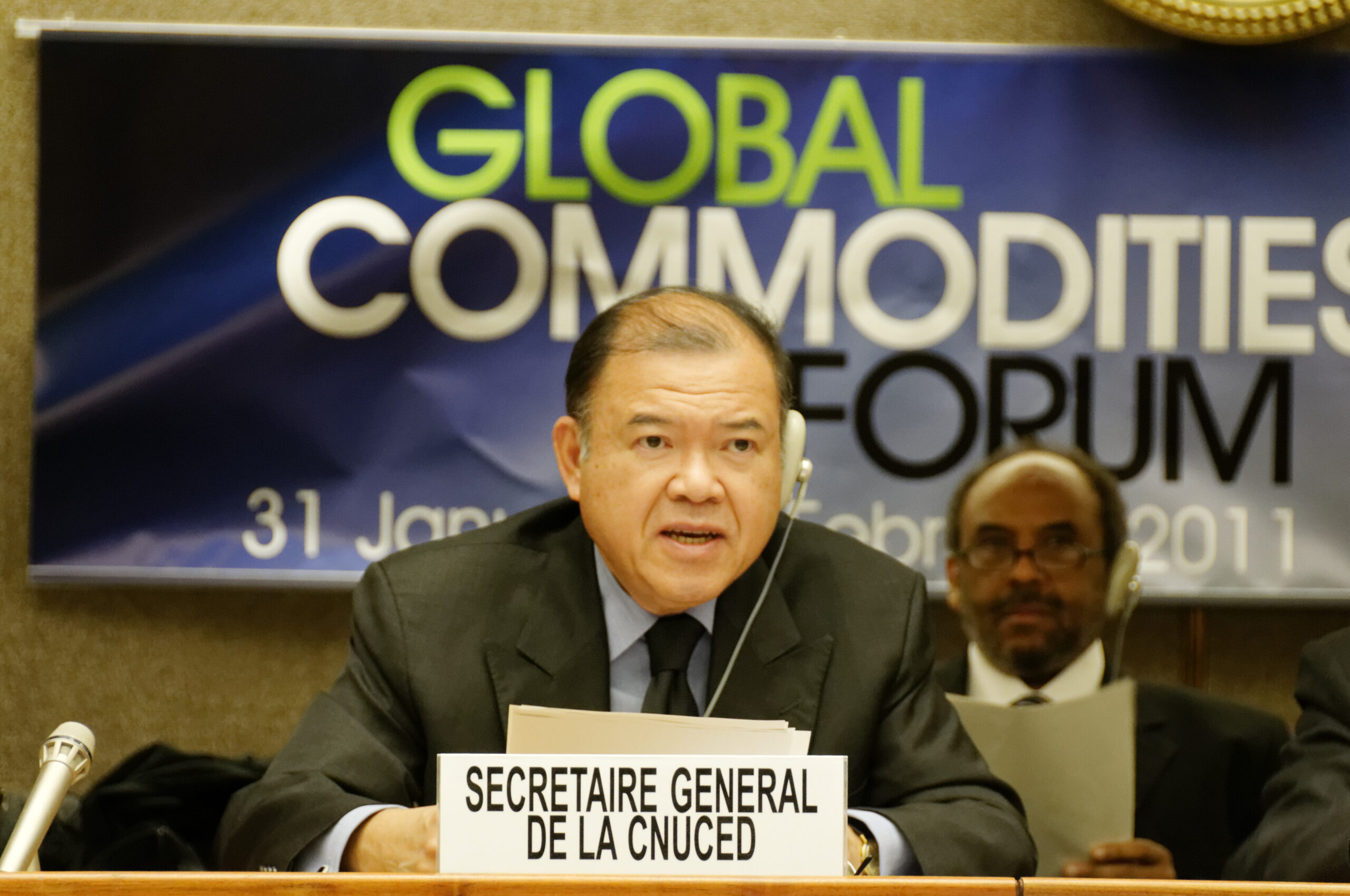Supachai Panitchpakdi: What’s good for China is good for the world

China’s economic growth has benefited its neighbours and the rest of the world, says Supachai Panitchpakdi
Fear and admiration – this is how much of the world has reacted to China’s phenomenal economic growth of the past 15 years. Such has been the response to all economic behemoths throughout history. In China’s case, the admiration is certainly well deserved – for halving its extreme poverty between 1990 and 2001, if for no other reason. In the long run, however, the fear – which is quite naturally focused on competition – may be exaggerated. What is good for China is likely to prove good for the rest of the region, if not the world. China is keeping the world economy afloat, and the point is not to put a brake on its momentum, but to nudge demand in Europe and Japan, lifting all boats.
Inside and out
China’s national income has been growing at the unprecedented rate of almost 10% a year since the mid-1980s. There are compelling internal factors for this growth: fast-rising domestic demand for consumption; high domestic investment and savings rates; low labour costs, aligned with high productivity; prudent macroeconomic management; and expanded manufacturing capacity. External factors include the country’s growing export markets, its greater integration into international production chains and its increasing international competitiveness. One of the most striking external factors is the astounding rise in foreign direct investment (FDI) since the country started opening up: China was the number two recipient of FDI in 2004. These phenomenal inflows have supported China’s export success through technology transfer and managerial learning.
China’s rapid ascendance as an economic power started in its own back yard, thanks to its interconnections with the economies in south-east Asia. Since the early 1980s, they have been an important destination for its exports, and their investment helped both to lay the groundwork for China’s integration into the world economy and to bridge an external financing gap.
Initially, the main foreign investors were overseas Chinese from Hong Kong, Malaysia, Singapore and Taiwan. Even today, the bulk of China’s inward FDI still comes from inside Asia. Geographic proximity, shared cultural traits and extensive overseas Chinese networks have minimized the transaction costs, while the sheer size of the domestic market and the competitive costs of labour and infrastructure have long made the country a magnet for investors.
Intra-industry trade, generated by multinational corporations (MNCs), has been a central feature of south-east Asian regional production networks and supply chains, especially in the information technology industry.
This trade – primarily in intermediate inputs, spare parts and semi-finished products and services – is the result of the great complementarity between China and other economies in the region. (China’s imports from the region have been growing at almost 18% a year since 1995 and its exports to the region at almost 14%.) The next step for many of these MNCs was simply to relocate their production to China. The country, therefore, plays an increasingly important role in the region’s production and supply networks.
Through its growing imports, the dynamic Chinese economy has provided a significant macroeconomic growth stimulus to the south-east Asian region and beyond. China is an increasingly-important source of demand for capital goods, intermediate products and consumer goods from elsewhere in Asia.
On balance, most Asian countries appear to gain from China’s success, although these benefits differ considerably from one country to another. The region’s more-advanced economies have gained more from China’s dramatic growth than some of the less-advanced. The former enjoy significant trade surpluses with China by exporting machinery, equipment and intermediary products, while the latter sometimes compete with China head-on over consumer goods in some third markets.
Triangular trade
The new opportunities this has created are being enjoyed not just by countries in the region but also by many other developing countries around the globe. South-south trade is burgeoning: more than 40% of developing countries’ exports are to other developing countries, and trade among them is increasing at the rate of 11% a year. Chinese exports, in particular, have grown rapidly worldwide, including to developed countries, especially the US. In 2004, America was China’s largest export market, accounting for about one-third of all its exports.
Given the combination of strong regional production links and China’s integration into the world economy, intra-regional trade is frequently only an intermediate phase. China serves as the final stage for many goods emerging from international production chains that, at earlier stages of production, involve other economies of the region. As a result, Chinese exports to the rest of the world, particularly to America and western Europe, have a considerably higher content of imports from other Asian countries, a phenomenon known as “triangular trade”.
One result of China’s export success has been an increase in America’s bilateral trade deficit with that country, which amounted to $12 billion in 2004 alone – hence the American call for China to allow the renminbi to appreciate. However, in light of the triangular trade relations within Asia, the bilateral trade disequilibrium between the US and China should not be viewed in isolation from the overall global trade imbalances. China is not only a powerful exporter, but a dynamic importer as well, stimulating economic activity worldwide.
Between 1995 and 2004, China’s exports grew much faster than world trade, at more than 15% annually. Much of its export earnings went to finance imports, including raw materials from developing countries. Imports grew even faster than exports, at more than 17% a year. Iron ore imports rose tenfold between 1990 and 2003 alone, making China the world’s largest importer of that commodity. It holds the same status for natural rubber, tropical sawn wood, pulp and paper, and soybeans. Its petroleum imports account for more than 30% of the incremental global demand for oil, and the country’s import bill for primary commodities climbed almost $50 billion in 2004, up 60% over the previous year. Nor was this hunger limited geographically: imports from sub-Saharan Africa soared by 30% a year between 1995 and 2004.
China’s American surplus
Dominating the story of China’s trade success is its surplus vis-à-vis the US, largely because China accounts for most of the recent rise in the American current account deficit. The question arises: is this imbalance sustainable or will it trigger a global crisis? Some perspective is in order here. The American trade deficit with all Asian developing countries, including China, accounts for just over a third of the total American trade deficit. The lion’s share of that deficit originates elsewhere, with the European Union (EU) representing some 17% of the total; its North American neighbours, roughly the same percentage; and Japan, almost 12%.
Leaving aside the role that should be performed by other major players in the world economy, it would be misplaced to ask China to slow its growth. On the one hand, China desperately needs to reduce poverty, absorb the workforce moving inexorably out of the rural areas, narrow the income gap and ensure a more equitable share in rising prosperity. It also needs to improve its human capital, environmental sustainability and the efficiency of its bureaucracy.
On the other hand, the rest of the world stands to benefit greatly from China’s continuing growth, expected to remain at about 7% to 8% a year over the next five years. The consumer market there is now the world’s seventh-largest and will go on generating tremendous demand for capital goods, primary commodities, consumer goods and intermediary inputs.
At current growth rates, Chinese consumer spending will make the country the world’s second largest market in terms of household consumption by 2014, according to recent forecasts by Credit Suisse First Boston, an investment bank.
In my view, the solution lies in stimulating the currently sluggish or even stagnant demand growth in major developed economies, particularly Japan and the EU – neither of which, unfortunately, seems to be following this path. A strong EU and Japan will enable China to continue its current growth pattern and lift all boats for the world economy as a whole. The world needs a strong China as much as China needs the world.
CV Supachai Panitchpakdi
Supachai Panitchpakdi, a former deputy prime minister of Thailand, is secretary-general of the United Nations Conference on Trade and Development. He was director-general of the World Trade Organization from 2002 to 2005.




